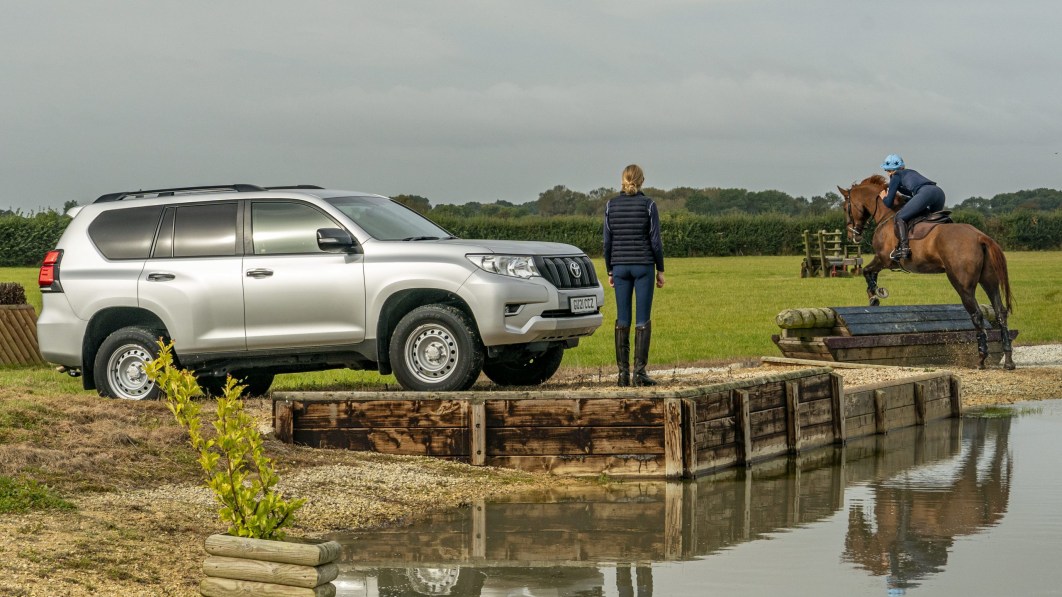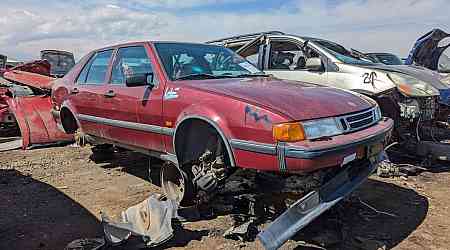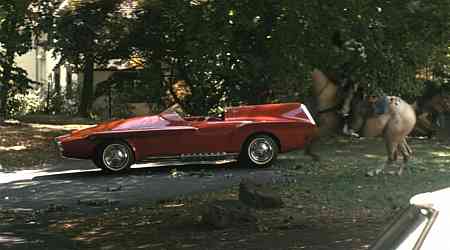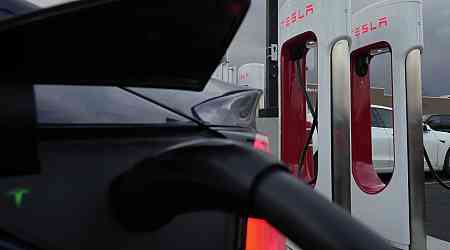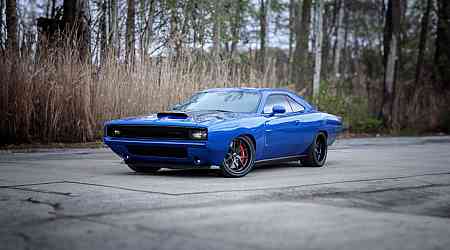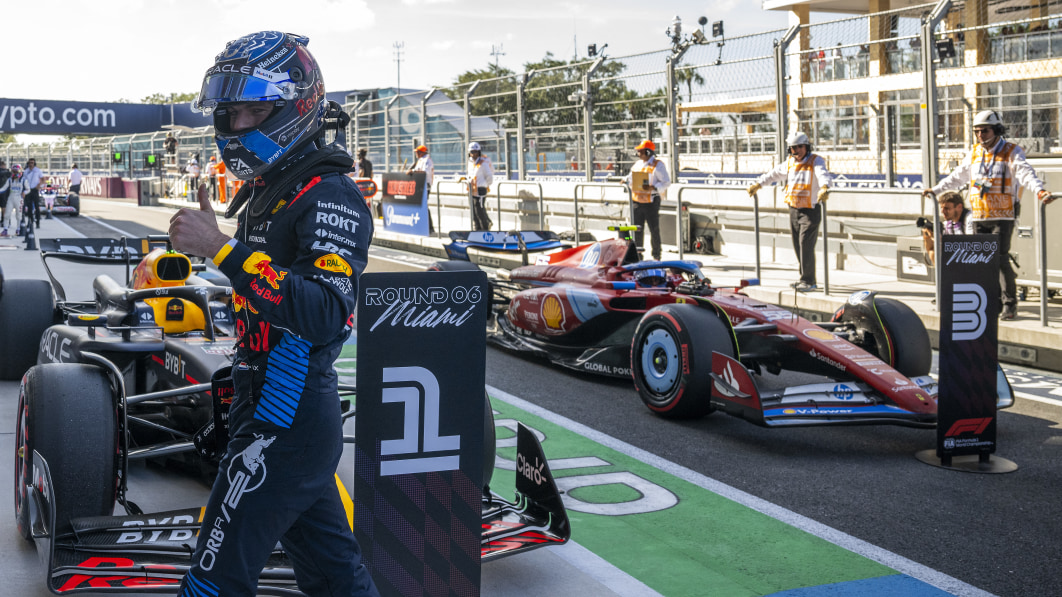America has long stood proud as the land of 4x4s, but many of our best-selling off-roaders would flop on the European market due in part to size constraints. Can you imagine trying to park a Ford Bronco Raptor in a town built by the Romans? Or, how much it would cost to fill up a Chevrolet Silverado HD ZR2 if you're paying $8 for a single gallon of gas? Historically, most of the 4x4s sold in Europe have been tailored to the local market.
Here are five cool European-market off-roaders that have never received permission to hang out with the Jeep crew in Moab.
Dacia Duster
In a way, the original Dacia Duster released in 2010 is the NA-generation Mazda MX-5 Miata of Europe's off-roader segment. I'm not talking about handling; it takes a turn with the liveliness of a blimp. But, like the original Miata, the first-generation Duster brought a big serving of modernity to its segment. It gave buyers a far more daily-drivable alternative to the ancient Lada Niva without sacrificing off-road capacity, in the same way that the first Miata provided top-down enthusiasts with a more up-to-date alternative to British and Italian roadsters of the era.
Cheap and cheerful, the Duster is closer to a crossover than to a burly, body-on-frame SUV. It's built on a unibody platform, powered by a relatively small four-cylinder engine, and compact enough to zig-zag through crowded urban centers. Unlike, say, the Nissan Qashqai (which we knew here as the Rogue Sport), it was designed for mild off-roading — it appeals to folks who live in rural areas, adventure-minded buyers, and first responders. It wasn't offered with a two-speed transfer case or locking differentials, but models equipped with the optional part-time four-wheel-drive system (front-wheel-drive came standard) featured a six-speed manual transmission with an ultra-low first gear.
Dacia sold the original Duster through 2017 in many European countries, though production continued for several more years in overseas markets (where the off-roader often wore a Renault badge). Its successor, which is still built in 2023, arrived in 2017 with the same focus on off-roading but a longer list of features and a nicer interior. More than a decade after its launch, the original Duster remains a common sight.
Fiat Panda 4x4
City cars on stilts are a dime a dozen on the European market, but most can't tackle terrain that's more treacherous than a dirt road. There's an exception, one that has roamed freely in the highest and least hospitable parts of the Alps for over three decades: the Fiat Panda 4x4.
Fiat didn't envision the original Panda released in 1980 as an off-roader; the boxy, Giugiaro-designed two-door hatchback was let loose with Italy's chaotic traffic as its home turf. Four-wheel-drive appeared in 1983 with help from Austrian company Steyr-Puch (the same brand that contributed to developing and still builds the Mercedes-Benz G-Class). The system brought with it a two-inch increase in ground clearance. Demand quickly exceeded expectations, leading to spin-offs like the Lancia/Autobianchi Y10 4WD and rivals such as the Citroën AX 4x4.
Back to the present: the original Panda 4x4 has become an endangered species, largely due to its eagerness to rust and to drivers who treat it like a pair of hiking boots, and the 4x4 variant of the current, third-generation Panda carried the all-terrain torch until 2022. Fiat hopes to bring the model back, though this hasn't happened yet. Before it disappeared, the modern-day Panda 4x4 offered a turbocharged, 878-cubic-centimeter two-cylinder engine, a five-speed manual transmission, and a more outdoorsy design than the front-wheel-drive model.
Although 85 horsepower isn't asking much out of a modern two-cylinder engine, the Panda 4x4's acceleration was best described as leisurely. That was never the point, though. Like its predecessors, it delivered mountain goat-like off-road capacity in a city car package.
Monteverdi Safari
We need to venture into one of the pantheon of automotive history's darkest corners to bump into the Monteverdi Safari. What the hell is a Monteverdi, you ask? It's not a cocktail, and it's not a type of pasta. It was Swiss brand active from 1967 and 1984 that specialized in making luxury cars, including 2+2 coupes. Monteverdi entered the SUV segment in 1977 when it launched the Safari with familiar underpinnings.
On the surface, we've got a boxy design reminiscent of Land Rover's original Range Rover and a luxurious interior that looks like it belongs in a sport sedan. Dig deeper and you'll find a frame, a V8, and a part-time four-wheel-drive system shared with the International-Harvester Scout II. Putting an American heart in a European body wasn't unheard of then, but it was unusual in the burgeoning luxury SUV segment.
Safari production ended in 1982, and those of you well-versed in International-Harvester history will immediately know why. The Scout II retired in 1980, and executives canned the Scout III that the brand was experimenting with as a replacement. Monteverdi no longer had a donor car and couldn't afford to develop a second-generation Safari from scratch. It's too bad; this SUV was lightyears ahead of its time.
No one knows how many units of the Safari were built, as third-party estimates vary from several hundred to a few thousand. The model was built largely by hand, and Monteverdi briefly offered a second Scout II-based SUV called Sahara that looked more like its American cousin.
Monteverdi didn't manage to beat Land Rover, but all was not lost. Perhaps sensing that there wasn't a light at the end of the Safari's tunnel, the firm created a four-door version of the Range Rover and presented it in 1980. Land Rover gave the project its blessing, and the four-door Range Rover became so popular that the British company took over production from its Swiss partner and built the SUV under license.
Nissan Patrol
Americans discovered the Patrol in 2016 when it landed here as the second-generation Armada, but the story of Nissan's big Land Cruiser-fighting 4x4 goes back much further. The nameplate made its debut in 1951 on a Jeep CJ-like off-roader and gradually evolved into a more advanced breed of SUV with a fixed roof. The fourth-generation model (called Y60 internally) arrived in 1987 with a short or a long wheelbase, bigger dimensions that cleared up much-needed interior space, and a longer list of equipment that made it more comfortable to drive on the pavement. In an odd twist of fate, the Y60-generation Patrol was marketed as the Ford Maverick in Australia for several years.
Off-roading enthusiasts speak the name "Land Cruiser" in a reverential tone, but "Patrol" isn't far behind. It's a tough body-on-frame SUV with a part-time four-wheel-drive system, a wide selection of available gasoline- and diesel-burning six-cylinder engines, and a massive amount of aftermarket support — part of the reason why the Y60-generation model remains highly sought-after is because it's easy to turn into a serious off-roading rig. It's a great workhorse, too; good luck finding a Patrol from this era that's not fitted with a well-worn trailer hitch.
Its successor, the Y61-generation model, arrived in 1997 with an even tougher drivetrain and a more comfortable interior, and it's still sold new in some markets (like the Middle East). Decades spent in the Land Cruiser's shadow make the Y60-generation Patrol a bargain for Europeans with something heavy to tow or miles of unforgiving terrain to drive over, but sourcing one that hasn't been abused is difficult.
Toyota Land Cruiser Prado
Tell someone in Europe that you drive a Land Cruiser and they'll likely picture you in a Prado. Smaller than the full-size model sold here until 2021, the Land Cruiser Prado is marketed as a no-nonsense SUV that blends excellent off-road capacity with the ability to tow excruciatingly heavy loads. It features body-on-frame construction, it's offered with two or four doors, and the entry-level model is far more basic than any off-roader sold new in the United States. It comes with a 204-horsepower, 2.8-liter turbodiesel four-cylinder engine and a six-speed stick.
It's not the most luxurious, the newest, or the fastest SUV on the European market, but it's certainly one of the most capable, which explains why it's gradually replacing the last-generation Land Rover Defender as the Old Continent's go-to workhorse. Put simply, it was designed for folks who need to get stuff done (whether that's going kayaking or hauling hay bales) rather than for folks who want to sit really high in traffic.
We've never gotten a taste of the Prado in the United States. We've seen it here, but it's always been badged as the Lexus GX after getting a large serving of luxury. That could soon change. Toyota confirmed the Land Cruiser nameplate will make a comeback in the near future, allegedly with a retro-inspired design and potentially with nothing bigger than a four-cylinder under the hood, and a preview image strongly suggests that the SUV will be closely related to the next-generation Prado that will be sold overseas (and, consequently, the boxy new GX).


















